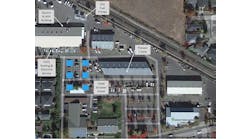Sen. Susan Collins (R-Maine) and Rep. Tina Smith (D-Minn) introduced energy storage legislation this week that calls for a $300 million initiative to build five advanced, grid-scale systems across the country.
By cybrain/Shutterstock.com
Under the Better Energy Storage Technology Act (BEST), the Department of Energy would invest $60 million a year from 2020 through 2024 to complete the projects by September 2023.
The energy storage legislation aims to increase economies of scale and drive down energy storage costs, according to Kelly Speakes-Backman, CEO of the Energy Storage Association. The systems would be designed to operate for 20 years, provide anywhere from 10-100 hours of power to the grid and serve as demonstration projects.
Akin to the federal SunShot Initiative, a program that helped reduce the cost of utility scale solar, BEST calls on the energy department to develop a national strategic plan to reduce costs of grid-scale energy storage, particularly long duration and seasonal systems, Speakes-Backman said. That includes setting targets for cost reductions, as well as enlisting national energy labs, federal agencies and private and public-sector stakeholders.
Bipartisan Congressional support for energy storage legislation
“Next-generation energy storage devices will help enhance the efficiency and reliability of our electric grid, reduce energy costs, and promote the adoption of renewable resources,” Sen. Collins said. “Our bipartisan legislation would help catalyze the development of this technology that holds great promise in the fight against climate change by supporting clean energy generation, including wind and solar.”
Bipartisan support for energy storage has been building in Congress and the White House. No less than six bills aiming to spur advancements and growth have been introduced in the legislature this session, Speakes-Backman said.
“It really is awesome. Advanced energy storage has emerged as a bipartisan priority at the federal level, and we’re doing all we can to make sure common-sense legislation passes into law,” Speakes-Backman said in an interview with Microgrid Knowledge.
Rep. Sean Casten (D-Ill.) and Rep. Don Bacon (R-Neb.) on May 22 introduced the Promoting Grid Storage Act of 2019 (PGA). The energy storage legislation would enable the energy department to provide states, utilities, municipalities and electric cooperatives with resources to improve grid-integration of energy storage. Speakes-Backman said that the Casten/Bacon bill would reduce barriers to storage deployment, particularly for smaller utilities.
Several other Congressional bills to bolster grid-scale energy storage and enhance US competitiveness have been introduced this session:
The Energy Storage Tax Incentive and Deployment Act, aka the storage ITC
The Expanding Access to Sustainable Energy Act
The Clean Energy for America Act
The Battery Storage Innovation Act
The Advanced Grid Storage Act
Advanced energy storage potential
Costs for grid-scale energy storage, as well as mid-tier and residential systems, have been coming down dramatically, Speakes-Backman said. “In just the last several years we’ve seen an 80% reduction in commercial and industrial battery energy storage costs.”
Installations have been increasing rapidly, as well. The U.S. market for advanced battery energy storage systems almost doubled from 2017 to 2018, Speakes-Backman noted. ESA expects it will double again this year and triple in 2020.
ESA anticipates that the imposition of a 25% tariff on Chinese battery energy storage imports by the Trump administration, if that occurs, would dampen development and market growth. ESA is still working through its analysis of the impact. For now the industry association is holding to the forecast it made in its 35×25: A Vision for Energy Storage report at the end of 2017. In it, ESA forecasts there will be 35 GW of grid-connected energy storage in US by 2025.
What’s needed to drive more cost reduction
A number of developments must occur for advanced energy storage costs to decline sufficiently, according to Speakes-Backman.
For example, utilities must include energy storage in their long-term planning, she said. Utilities now have more than 4 GW of energy storage projects on their books.
“Advanced energy storage is a different resource than the industry has seen before. Whereas resources could be easily categorized as either generation, transmission or distribution, battery energy storage takes on a different perspective in that it can be considered as all three,” Speakes-Backman said.
Value of FERC 841
The US also needs to create regulatory and market environments to support the multiple grid services, aka value-stacking. The enactment of FERC 841 did just that, and regulatory authorities, industry and other stakeholders, including communities, are working their way through implementing the rule.
To date, FERC 841, along with state energy-storage mandates, has been the federal policy that has had the most impact in terms of opening up power market opportunities that enable developers and end users to earn compensation for advanced battery energy storage systems, according to Speakes-Backman.
“We’ve been very pleased with FERC, and especially the leadership of Chair [Neil] Chatterjee to uphold and require systems operators to move forward with their plans to fully implement 841 and allow storage systems to be compensated for the value they provide the grid. We’ve really seen how much FERC means it when it says will it will unleash opportunities for energy storage to enhance and strengthen grid performance.”
Track news about energy storage legislation. Subscribe to the free Microgrid Knowledge newsletter.







